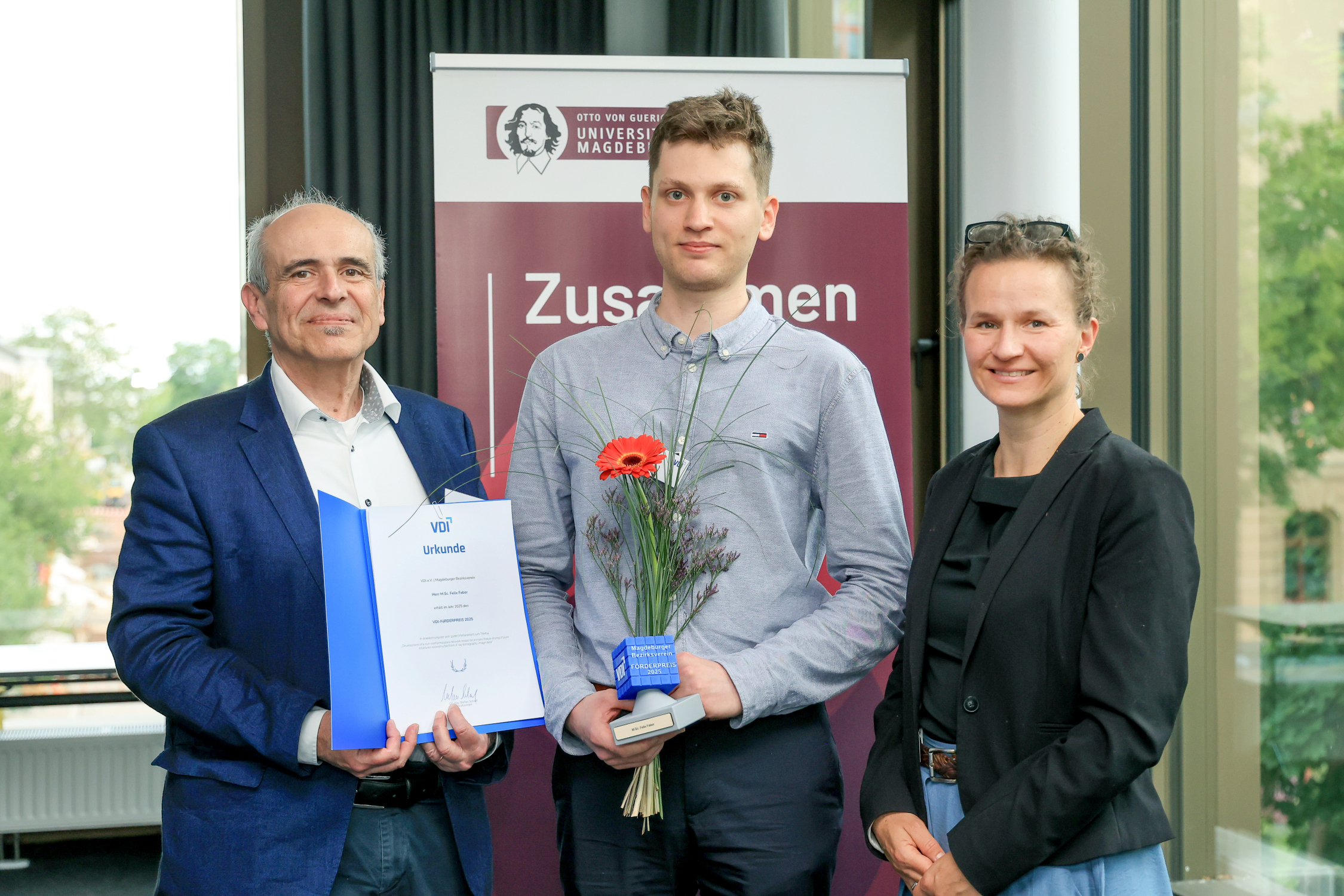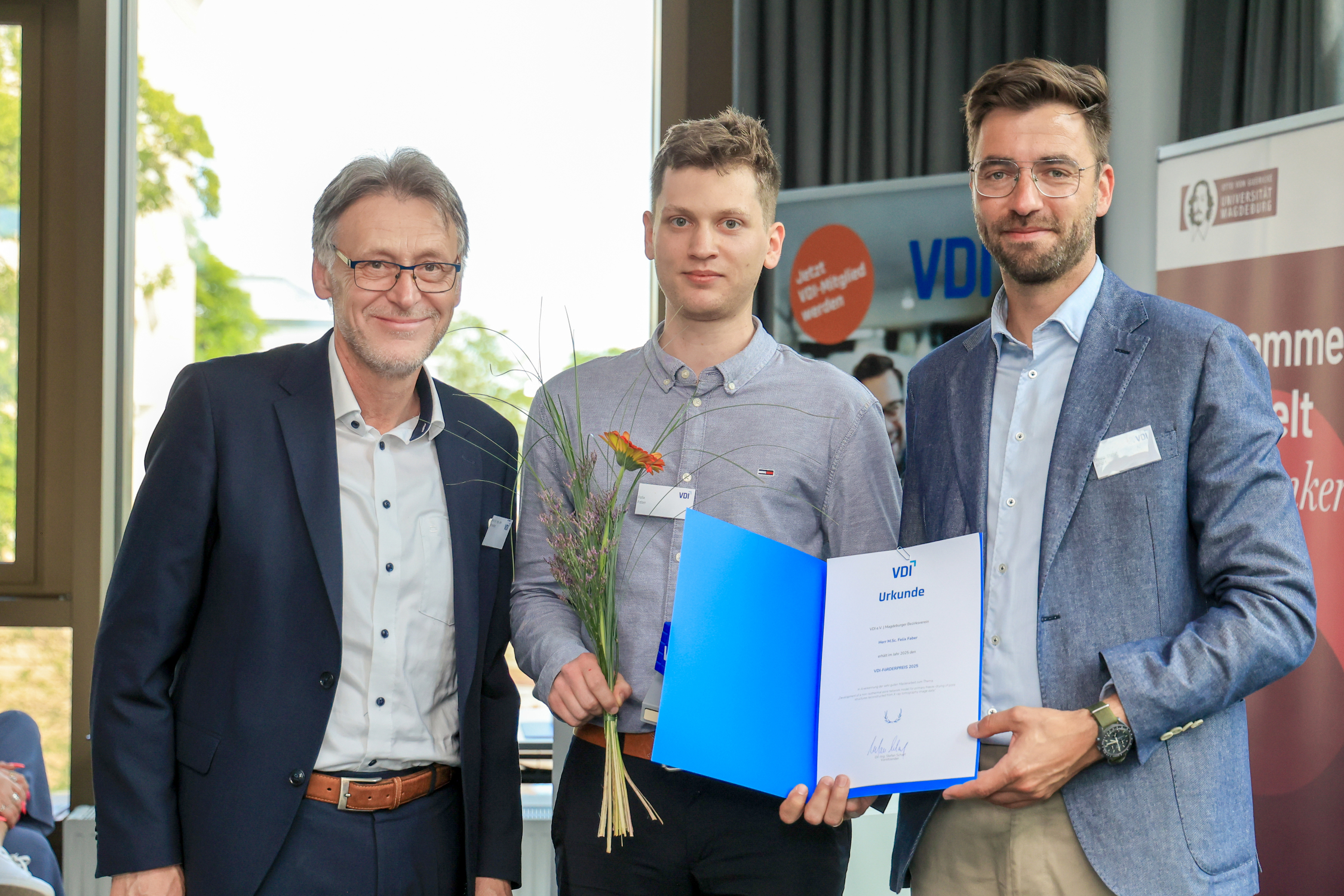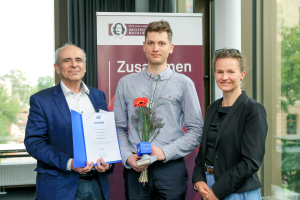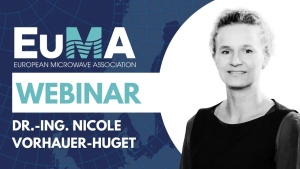News
Doctoral Defense of Mr. Haashir Altaf
We are very happy to announce that Mr. Haashir Altaf has defended sucessfully his doctoral work on the topic "Pore Network Modeling and Neutron Imaging-Based Analysis of Transport in Fibrous Porous Transport Layers for PEM Electrolyzers" . Haashir is the first Ph.D. candidate from our TPM research group who will obtain his doctorate.
We hope that Haashir enjoyed the traditionall ride on the horse to the Otto statue at Alter Markt quite well. We wish Haashir and his family all the best for their future.

DECHEMA/VDI Promovierendenseminar 2025 Fachgruppe "Wärme- und Stoffübertragung" (WSUE)
Vom 26. - 28. November 2025 fand in diesem Jahr das Promovierendenseminar der DECHEMA/VDI Fachgruppe "Wärme- und Stoffübertragung" (WSUE) am Lehrstuhl für Thermische Verfahrenstechnik an der OVGU statt.
Neben kollegialen Austausch zwischen den Promovierenden, einem spannenden Vortrag zum Thema "Scientific Publishing in the AI age: are the “old” rules of good scientific practice still sufficient?", standen auch die fachlichen Themen im Vordergrund des Seminars, welche in kurzen Vorträgen präsentiert und anschließend diskutiert wurden.
Zum Abschluss wurde das Seminar mit einer spannenden Werksbesichtigung in der Industrie bei der Pergande Group in Weißandt-Gölzau abgerundet. Hier gab es tolle Einblicke in die industrielle Formulierung von Feststoffprodukten mit der Wirbelschichtgranulation.

Exchange Student from Purdue University Mr. Carter William Schmitt
A success story that will hopefully continue:
Carter William Schmitt, an American and Purdue Universityundergraduate student, visited OVGU as part of his studies in the first half of 2025 (FVST Auslandsaufenthalt). In addition to successfully completing numerous courses in process and systems engineering, Carter actively participated in research at the Chair of Thermal Process Engineering as an intern and student assistant in the Transport in Porous Media research group.
He was able to present his successful experiments with mealworms in a lecture at the international online conference “The 4th International Electronic Conference on Processes.” Carter's preliminary investigations were continued in a cooperation project with the University of Chemical Technology and Metallurgy in Sofia (Bulgaria) in the second half of the year and, with a little luck, will be the starting point for a scientific research project between OVGU and the Technical University of Munich in the coming year.
We would like to thank Carter for his tremendous support of our experiments and their evaluation, as well as for his phenomenal presentation at the 4th International Electronic Conference on Processes! We wish him every success and all the best for his studies and hope to stay in touch with him in the future!
Best Oral Presentation Award for M.Sc. Lucas Briest at AMPERE Conference
Our Ph.D. student Mr. Lucas Briest has received the first award for the best oral presentation at the AMPERE conference 2025, which took place from 15th to 18th September in Bari, Italy. The international conference with key focus on high power microwave applications takes place every two years. Lucas has presented our recent results in the field of microwave drying of bricks and tiles.

We wish Lucas much success with his excellent work for the future.
VDI Magdeburger Bezirksverein Förderpreis 2025 for M.Sc. Felix Faber
Felix Faber has received the Förderpreis 2025 from the VDI Bezirksverband Magdeburg for his Master thesis on "Development of a non-isothermal pore network model for primary freeze-drying of pore structures reconstructed from X-ray tomography image data". Further details can be found in his publication in Drying Technology: https://doi.org/10.1080/07373937.2024.2407062.
We congratulate him to this great achievement and wish him all the best!


(Fotos: VDI Magdeburger Bezirksverein, © Viktoria Kühne)
EuMA Webinar series: Use of Microwave for Process Engineering Applications
Interesting talk of our group leader, Dr.-Ing. Nicole Vorhauer-Huget in scope of the webinar series of the European Microwave Association (EuMA): Nicole gave an overview about her latest works regarding microwave heating in process engineering applications:
The goal of achieving GHG-emission free production processes by the year 2050 the latest (referring to the current European climate goals) will strongly depend on the substitution of fossil-based energy carriers by „green“ alternatives. One promising option currently being pursued is electrification, using renewable sources, such as wind and solar energy. In process engineering applications, energy is usually required in the form of thermal energy to realize material conversion (e.g. phase transition or reaction). Possible (electrified) solutions for this purpose are
- indirect ohmic heating,
- direct ohmic heating,
- inductive heating and
- microwave heating.
These technologies, each, have individual advantages and disadvantages and enable different process efficiencies. Direct volumetric heating, realizable with the three latter technologies, thereby offers great opportunities for process intensification. This is essential for the reduction of the overall energy consumption of production processes, which is equally important to achieve the climate goals.
In this talk, the use of microwaves in process engineering applications is presented and discussed. Examples that will be addressed are the drying of wet materials at temperatures below 100 °C, biomass conversion by pyrolysis at temperatures up to 700 °C as well as energy supply to vaccuum freeze-drying at temperatures below 0 °C, frequently applied in the food and pharmaceutical industry.
You can still watch the webinar on YouTube:





